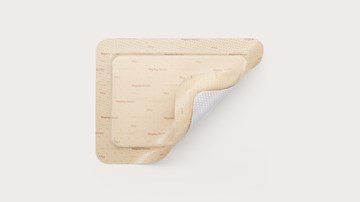Procurement’s role in reducing the total cost of wound care
Seek partnership, not just products, for a strategic mix of high-performing solutions, clinician support and health-economic insights.
As healthcare managers struggle with rising treatment costs and inconsistent patient outcomes
Dissecting the costs of wound care
A UK retrospective cohort analysis estimated that GBP £8.3 billion is spent on wound care annually (2017/18). This increased by 48%, relative to the period 2012/13
Where do these costs come from? The UK cohort analysis referenced above found that for UK’s National Health Service, only about 6% of the total cost burden of wound care was spent on product. The remaining expense went toward managing treatment including infections, maceration, delayed healing, and the additional nursing and hospital resources needed to address these complications
Many providers may benefit from building wound care programmes centered around evaluating and addressing the total cost of wound care. In terms of specific goals, procurement managers who participated in a Mölnlycke-sponsored survey identified four key value drivers as their most important priorities:
- patient experience and healing
- clinical outcomes
- operational efficiencies
- staff safety and satisfaction
Let’s walk through the fundamentals of a strong value-driven wound care programme.
A McKinsey & Company survey found that 44% of hospital executives in Europe and the U.S. are working more closely with Medtech as industry partners
A collaborative approach brings experts to the table who can evaluate, configure and implement a tailored programme focused on your unique challenges and opportunities.
For example, Mölnlycke Health Care demonstrates the strength of 'beyond product' partnerships in the wound care space. One client, the largest rural hospital in the United States, sought Mölnlycke’s help to reduce redundancies that caused less-than-desired clinical outcomes and excessive product usage (an average USD620,000 annual expenditure)
 |
 |
 |
| a near 40% improvement in wound healing rates |
annual reduction in supply expences |
increased patient and |
In the previously referenced McKinsey survey, healthcare executives ranked the strength of supplier capabilities in several areas. Consumable and device suppliers were most often ranked 'excellent' in the areas of clinical/medical expertise (37% of respondents), technical expertise (37%) and understanding of the hospital business (24%)
- auditing key data
- determining realistic metrics
- implementing new clinical processes and protocols
- tracking and data gathering on important metrics
- training and educating clinicians for standardised knowledge across teams
Address inconsistencies within the same practise
A systematic review of global literature conducted by a Scottish university in 2018 found consistent shortcomings — as reported by clinicians themselves — in wound education, knowledge of wound care and poor application of knowledge in the clinical setting
In a separate 2020 study, nurses expressed feelings of uncertainty around wound care decisionmaking
Another report indicates that variability in practice, protocols and solutions can lead to unpredictable outcomes, compromised care, unpredictable costs, increased staff time and product waste
Standardising to a limited set of high-quality products — for example, dressings clinically proven to properly handle fluid management over a longer period — can minimise skin maceration, reduce clinician time for dressing changes and, in turn improve product utilisation
In addition, a seemingly simple metric like the number of changes required for a dressing type can have a significant impact on infection rates. As one study noted, frequent dressing changes are a risk factor for bacterial contamination. It was also observed that wound healing is interrupted for approximately three to four hours after a dressing change
Your partner can help you find the wound care solutions that are backed by clinical evidence, as there are potentially significant product differences that you’ll need to consider for both efficiency and clinical outcomes.
Solution training and data collection are key to results
Hands-on training support from your partner is essential to ensure solutions are used correctly and aligned to best practice protocols. Supplemental to this training are a number of smartphone based digital bedside tools to assist clinicians with tasks like wound assessment, measurement and dressing selection. These digital apps not only reduce errors in manual wound measurements, but also decrease documentation time
Aside from treatment, training can also be focused on prevention. Consider the benefits of a value programme aimed at preventing pressure injuries. Training clinicians on how to spot an emerging pressure injury, proper patient repositioning and solutions that help clinicians turn the patient without injuring themselves all go a long way to reducing costs and risks while improving clinical outcomes, patient experience and clinician safety.
Our programme is not something we just introduce and hand over for you to implement. It’s a customer-focused process that brings together patient-centric solutions, services and tools that simplify and standardise outcomes delivery and make value easier to calculate. We walk through the journey with you every step of the way. We lead the needs assessment process to clarify the best opportunities for improvement and value creation based on your current state.
Working together, we develop an improvement plan — including ways to collect data — that aligns to your desired outcomes and financial goals. Our clinical experts support your clinical teams directly with education, training and tools that are delivered in both hands-on and digital formats.
We also closely monitor programme success to not only ensure goals are being met, but to also identify where adjustments can be made to maximise results.
'References'






